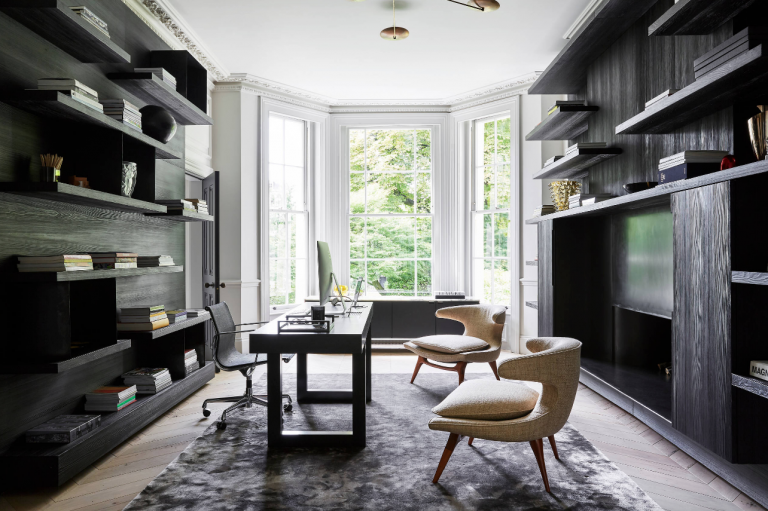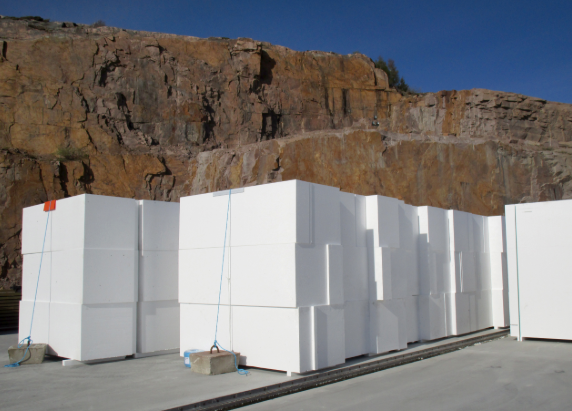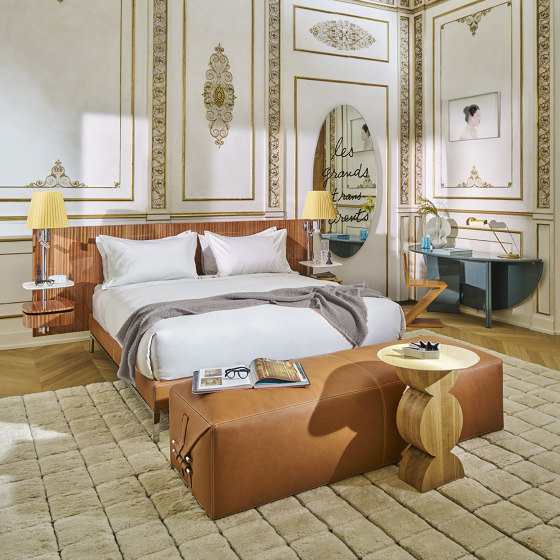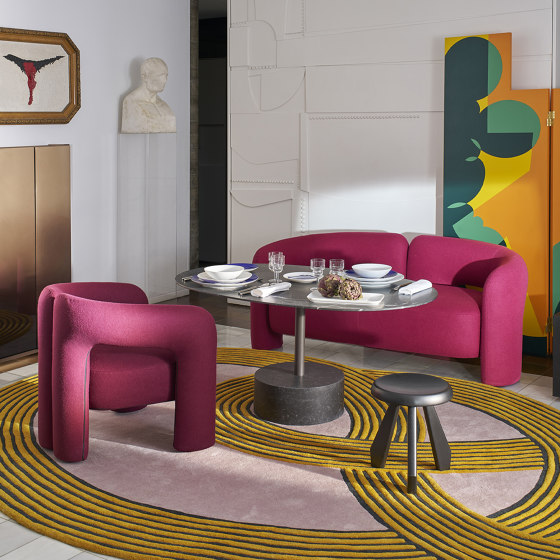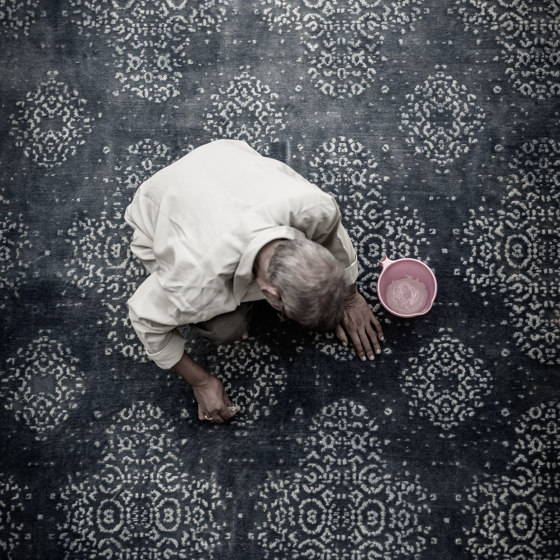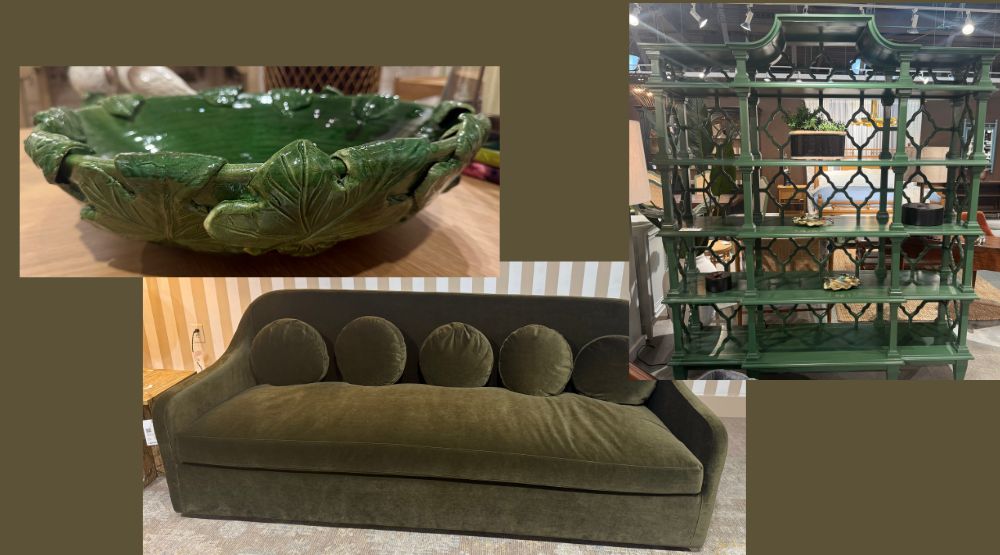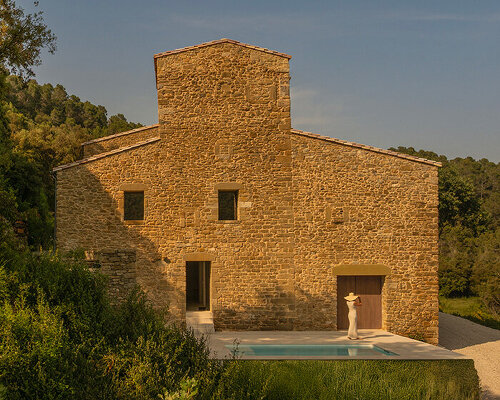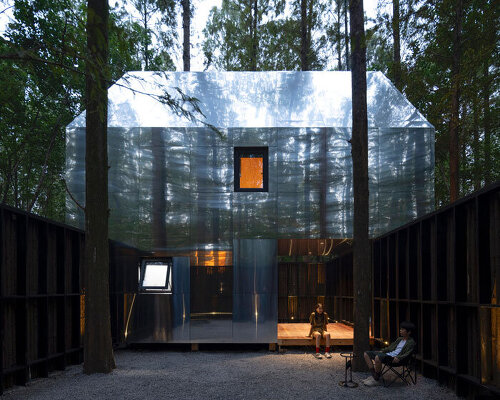Togo centres its "eccentric" modernist architecture in Venice Biennale debut


A curlicued brutalist hotel whose facade resembles two faces kissing and a bank crowned with towers informed by clay castles are among the modernist buildings celebrated in Togo's first-ever Venice Architecture Biennale pavilion.
The small African nation is putting its "eccentric" modernist architecture on the world stage in the Considering Togo's Architectural Heritage exhibition, which opens this weekend in Venice gallery Squero Castello.
Curators Studio Neida – an interdisciplinary practice based in Lomé and Berlin – hope the exhibition will paint a picture of an architectural legacy that is uniquely Togolese and worthy of attention and preservation.

"We love this architecture," Studio Neida co-founder Fabiola Büchele told Dezeen. "Lomé is filled with really intriguing stuff, and it just doesn't get the credit and the value, both locally and internationally, that we think it's due."
Displayed in the exhibition on double-sided textile banners weighted with handmade Togolese pottery, the buildings include the 1974 Hotel de la Paix – of the aforementioned kissing facade – by French architect Daniel Chenut.
Now left to ruin, the former luxury hotel also features curved partition walls that act as a brise-soleil and a glass-tile mosaic facade that stands out as one of the world's more colourful interpretations of brutalism.

"It's iconic in Lomé's landscape because of its eccentricity, it's quite amazing," said Studio Neida co-founder Jeanne Autran-Edorh. "There are a lot of funny details in the shapes of the facade, like the profile of two faces kissing, and the mosaics on the facade are still in a really good state."
Studio Neida hopes that by boosting awareness about the building, it can be saved from the constant threat of demolition.
Other Lomé modernist buildings are faring better. The 1980 West African Development Bank (BOAD) building by French architect Guy Durand and Togolese architect Raphaël Ekoué Hangbonon is a key example of tropical modernity that breaks from Western traditions in key ways, says the studio.

It even incorporates a reference to the Tata Tamberma – a type of ancient indigenous clay fortified structure still standing in northern Togo – in the tower-like volumes that sit atop the otherwise rectilinear building.
The "retro-futurist" BOAD is still in use and so well-maintained that enough tiles have been ordered to replace the facade for the next 100 years, said the studio.
Other modernist buildings included in the exhibition include the three-leaf-clover-shaped Hédzranawoé Market, created by Togolese architect Blèce Afoda-Sebou to honour women traders, and the ECOWAS (Economic Community of West African States) Bank for Investment and Development by Senegalese architect Pierre Goudiaby Atepa, who modelled its shape on the West African xylophone-like balafon.

In building a picture of a distinct Togolese architectural heritage, the curators have carefully considered what to include and what to exclude.
"We very decidedly, for example, didn't include colonial architecture because we wanted to say, what existed before that? What existed after it?" said Büchele.
"It doesn't mean that it's all built by Togolese or designed by Togolese – we've included international architects – but it was for buildings that were commissioned by the Togolese independent state."
Alongside the modernist buildings, Studio Neida's exhibition incorporates the region's ancient structures, such as the Tata Tamberma and Nôk caves, as well as Afro-Brazilian architecture, a hybrid style developed by freed slaves who returned from Brazil from the mid-1800s to mid-1900s.
The studio points out that Togo is one of only three countries from the African continent to be exhibiting at this year's biennale, alongside Morocco and Egypt, and that vast swathes of world architecture continue to be sidelined from conversations and curricula.

"If you talk about modernism, include modernism from everywhere," said Büchele. "Why does the modernism in West Africa have to be called tropical modernism, or given these kinds of titles? It's always an extra."
"For me personally and in Studio Neida more broadly, the interest was always to stop othering it and just say: this also exists. Let's talk about it. Let's learn from each other, and let's take it seriously."
Considering Togo's Architectural Heritage is based on an earlier exhibition held last year at the Palais de Lomé, a public arts institution in the nation's capital. The Palais de Lomé and its founding director Sonia Lawson are the commissioner of the Togo Pavilion in Venice.

The textiles, ceramics and wooden frames used in the exhibition were all made in Togo.
Dezeen is publishing several exclusive previews of pavilions at the 2025 biennale today. The British pavilion, the Dutch pavilion and the Nordic pavilion can all be seen on the site.
The Venice Architecture Biennale takes place from 10 May to 23 November 2025 at various locations across Venice, Italy. See Dezeen Events Guide for information about the event, plus other architecture and design events taking place around the world.
The post Togo centres its "eccentric" modernist architecture in Venice Biennale debut appeared first on Dezeen.

